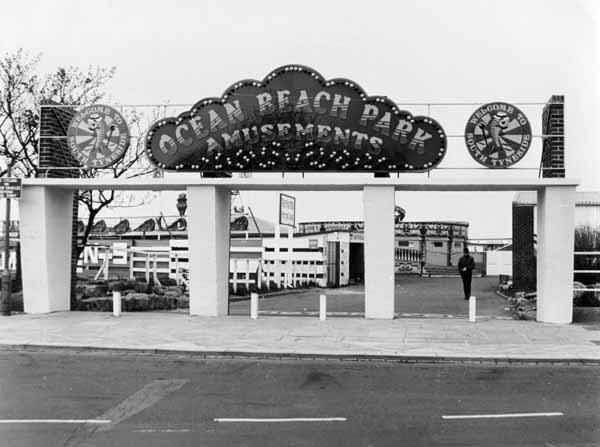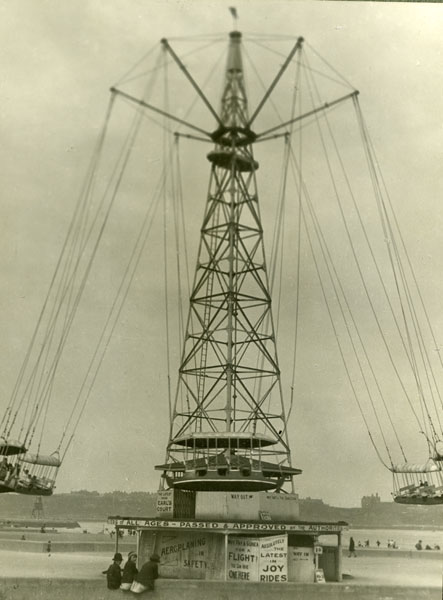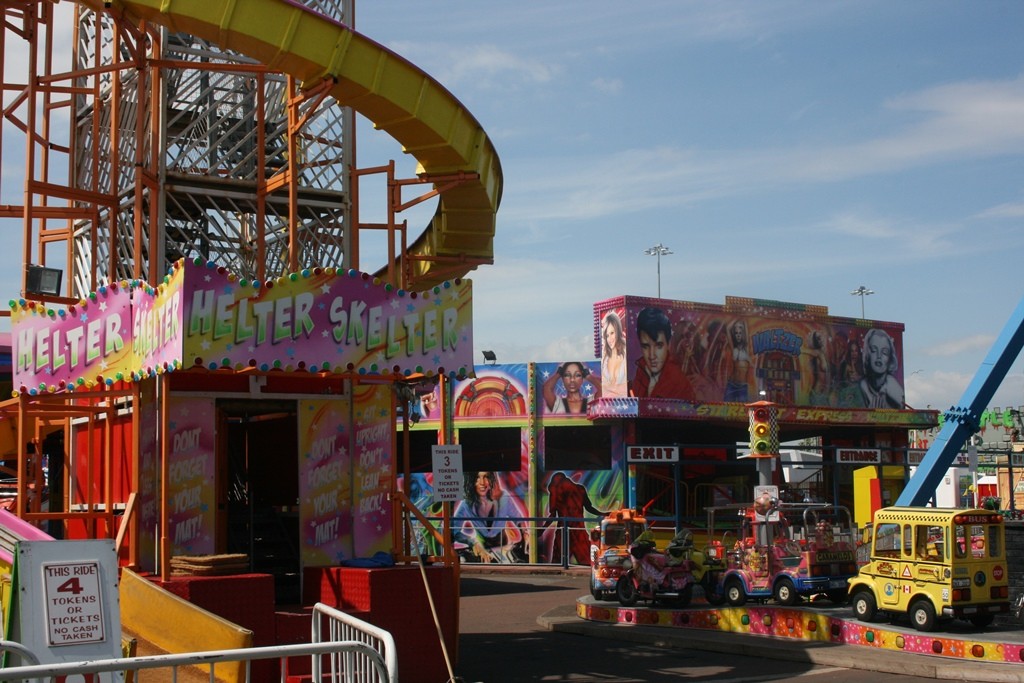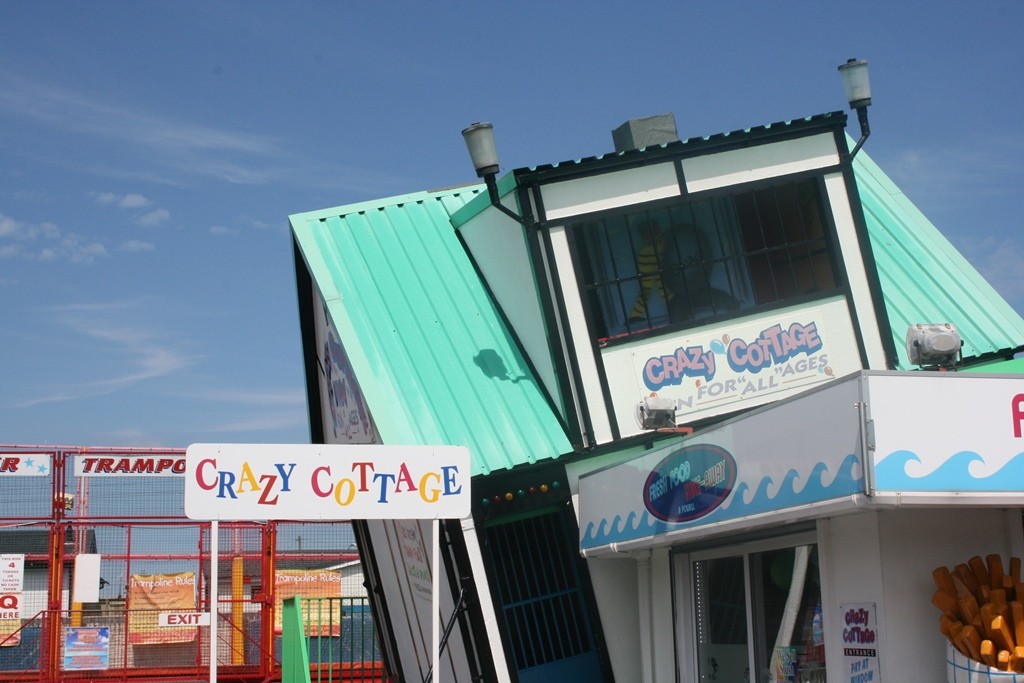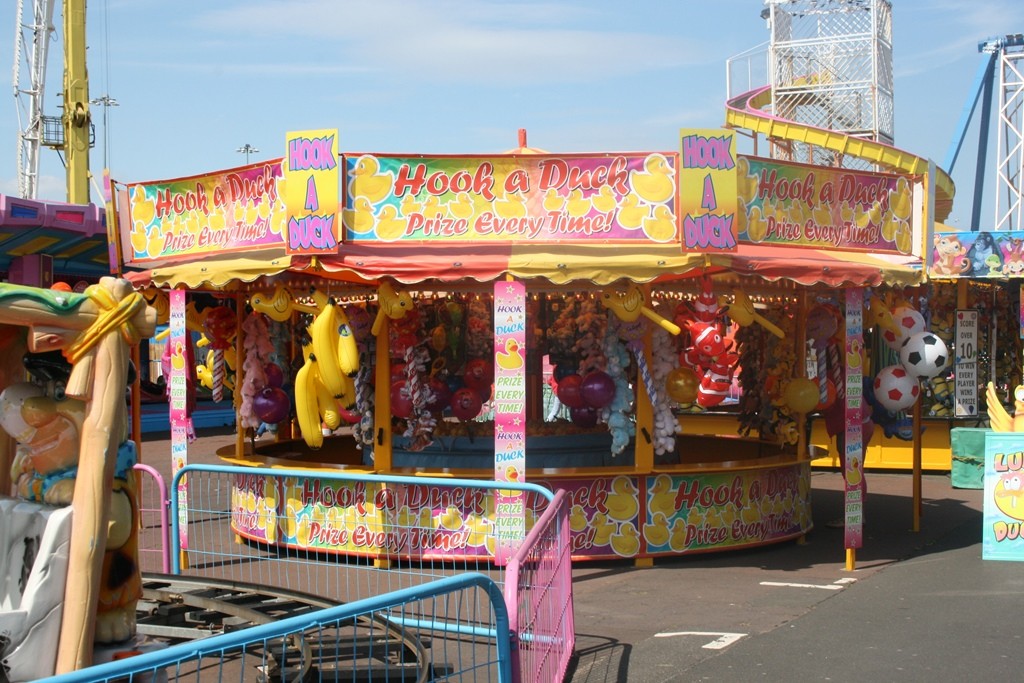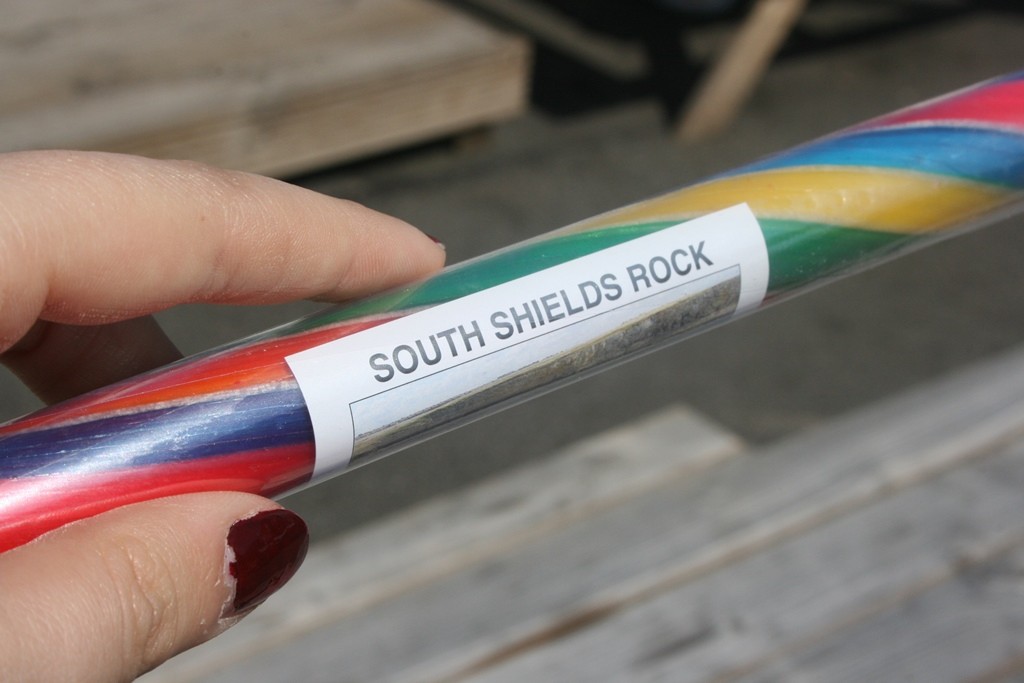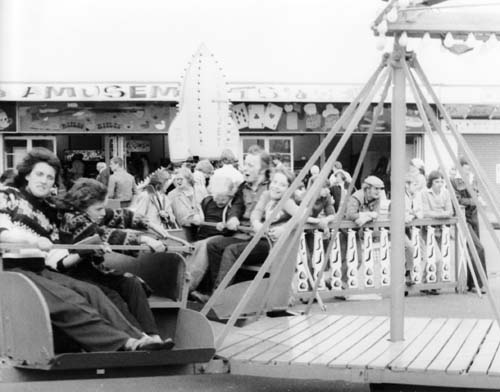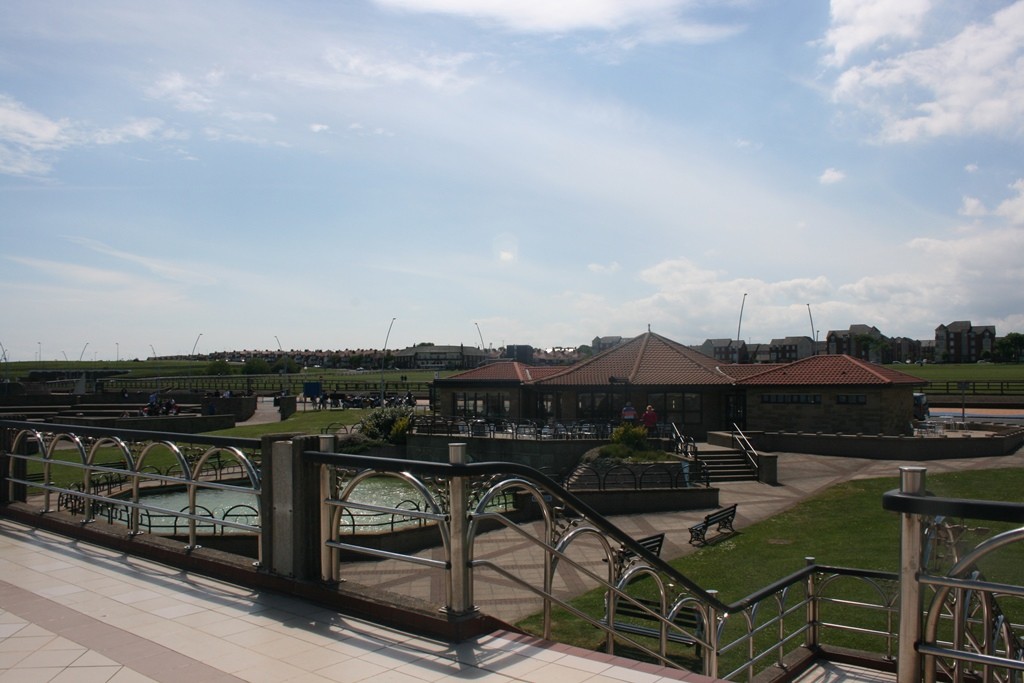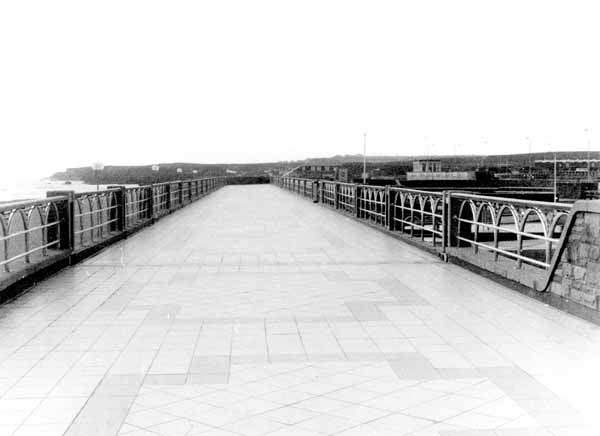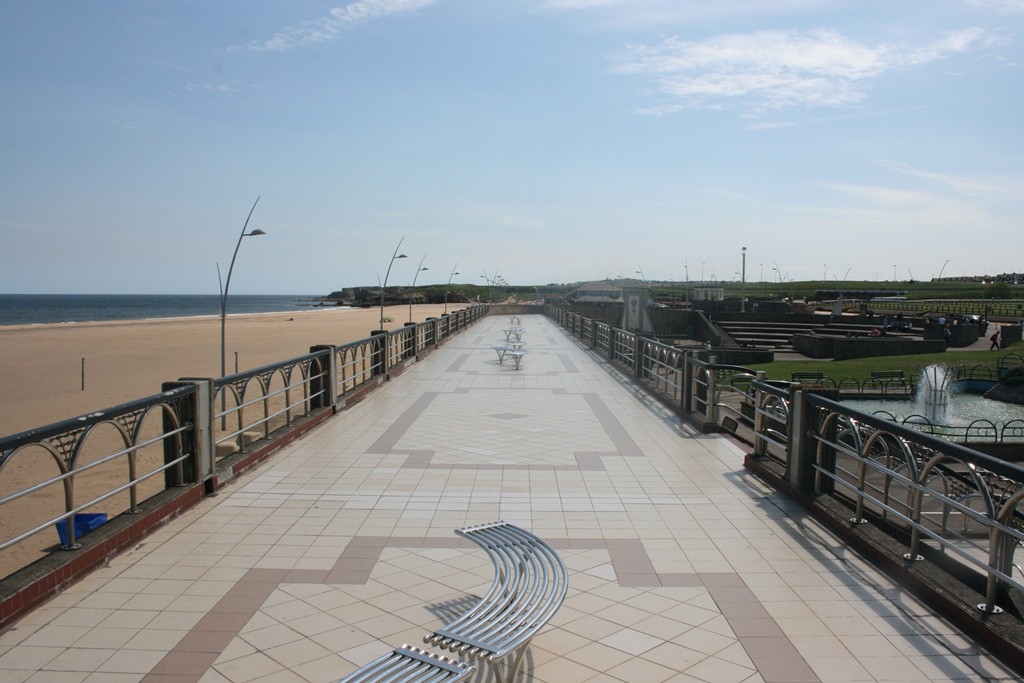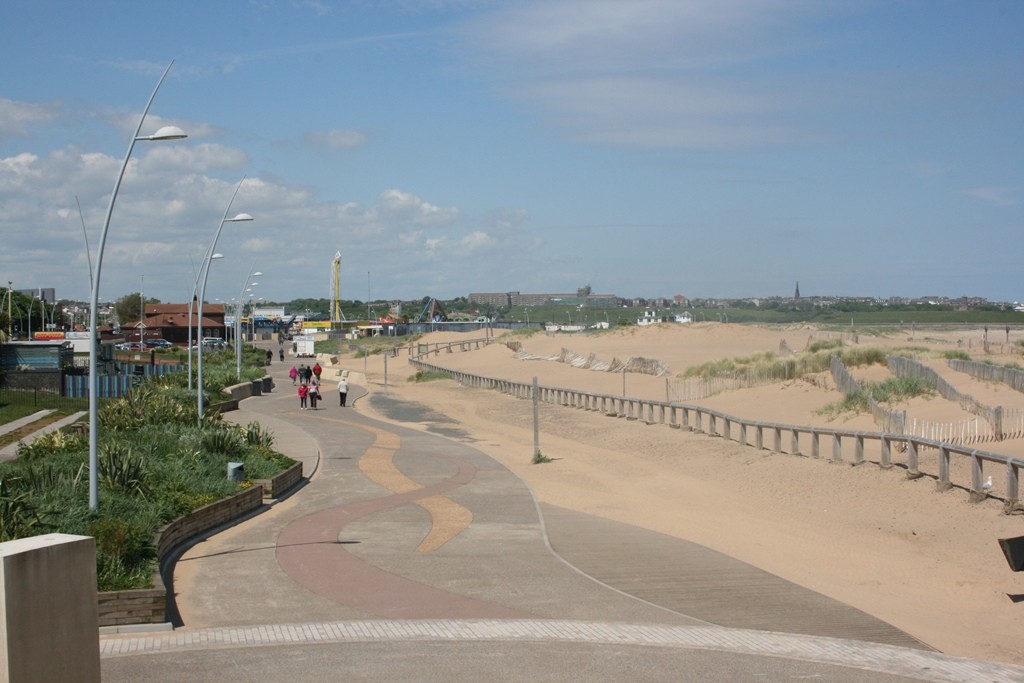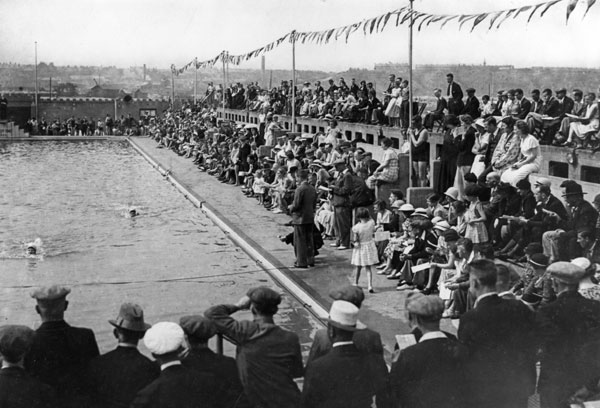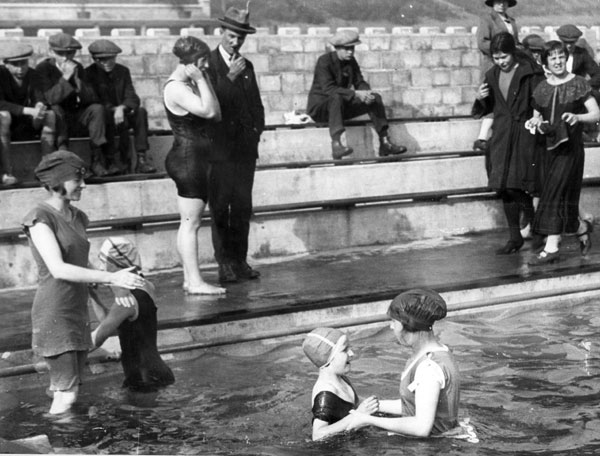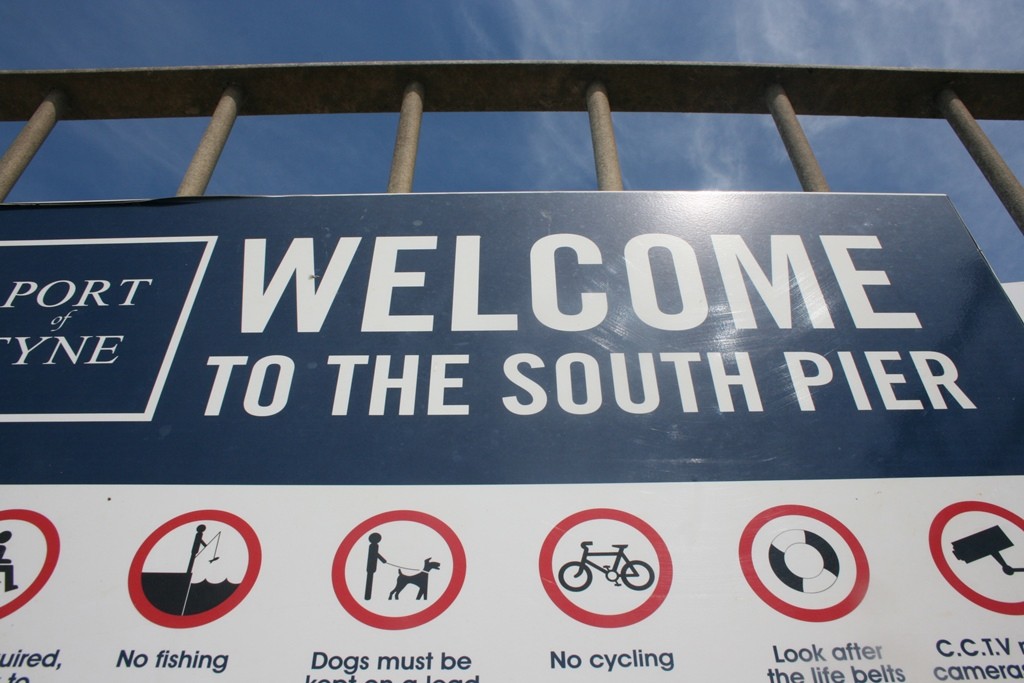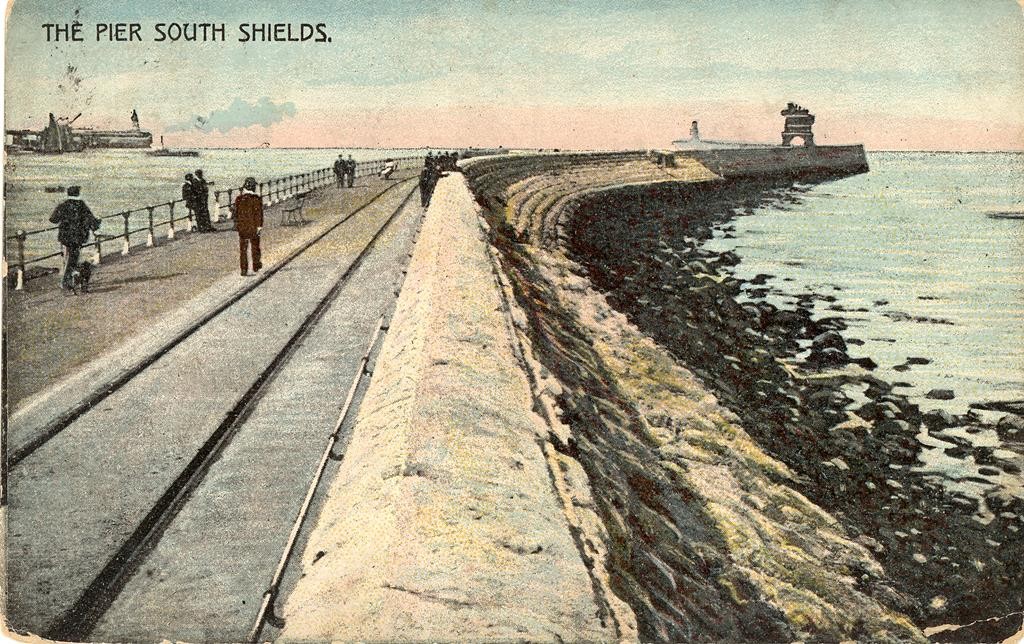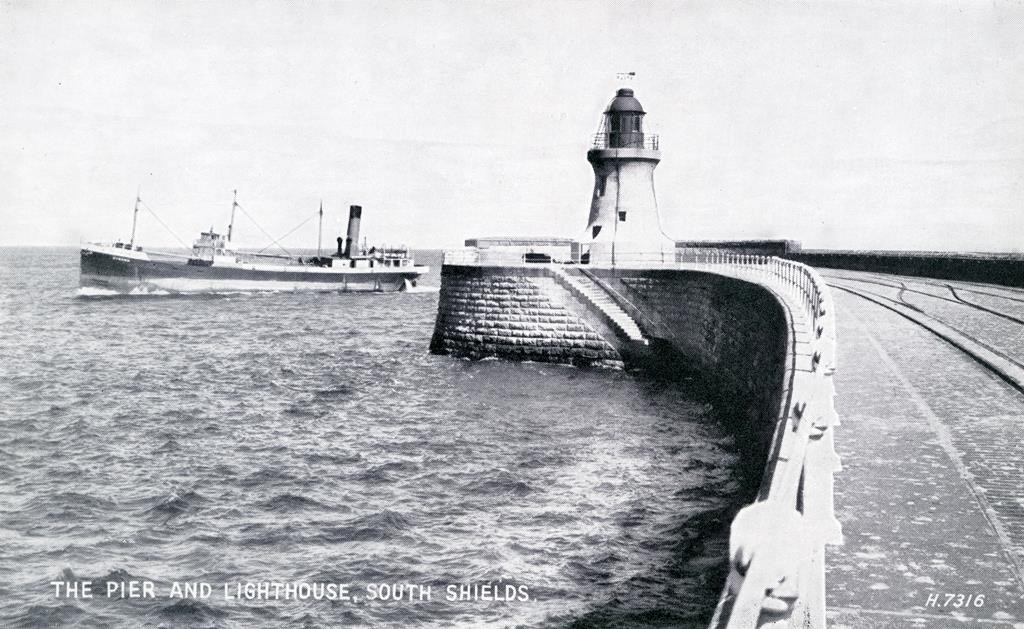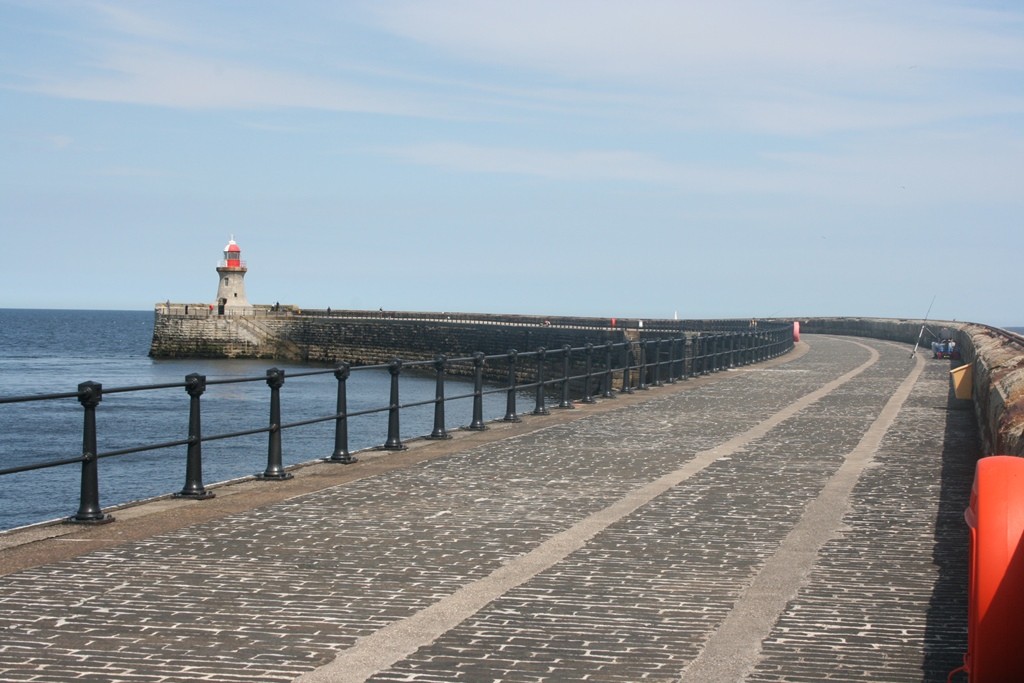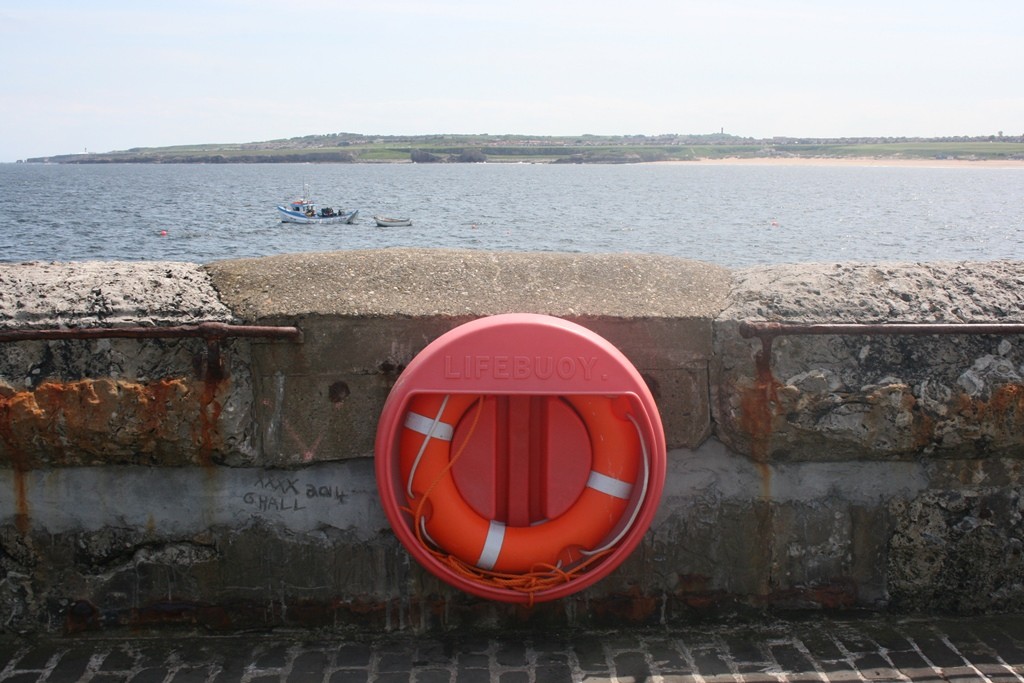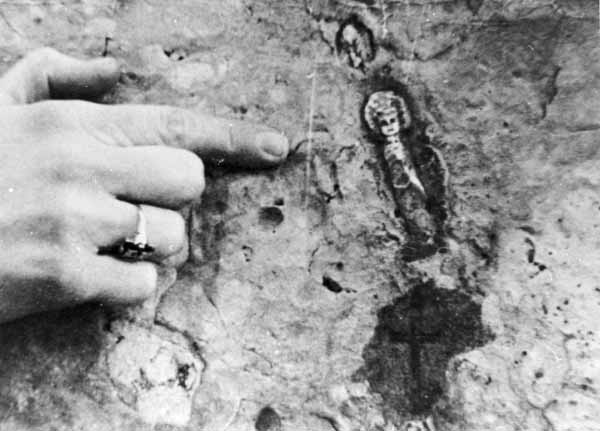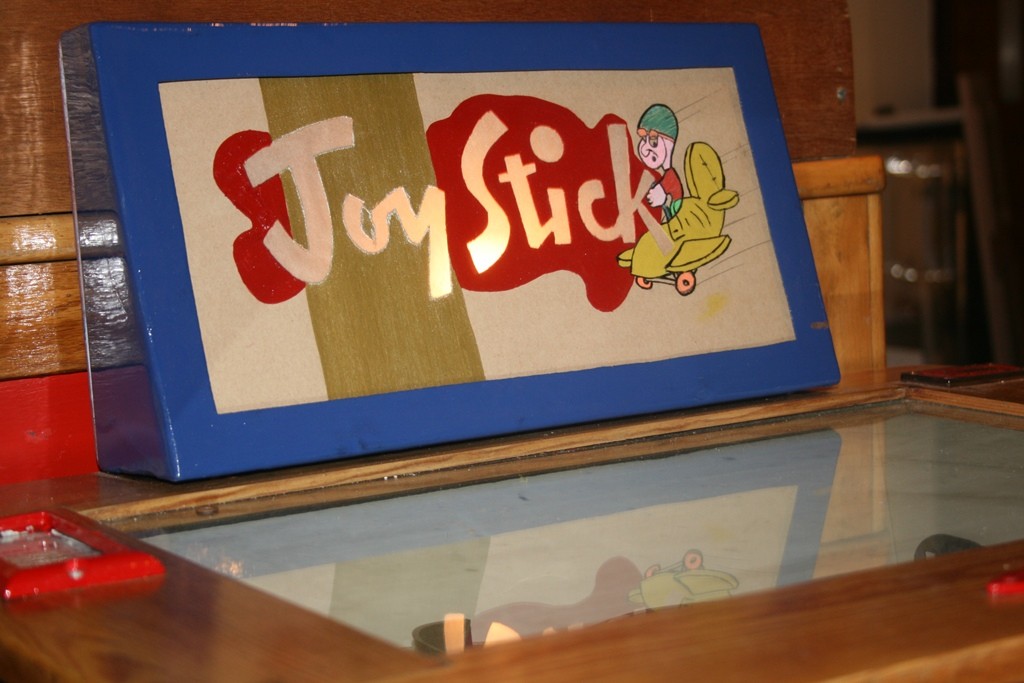
Photograph by Robyn Orr, 2015. Vintage arcade machine, ‘Joy Stick’, from the ‘Seaside Shields’ exhibition.
Hello again! Following my previous post about Marsden Beach, this post will focus upon postcards and photographs of the Fairground, Promenade, and Pier.
Fairground
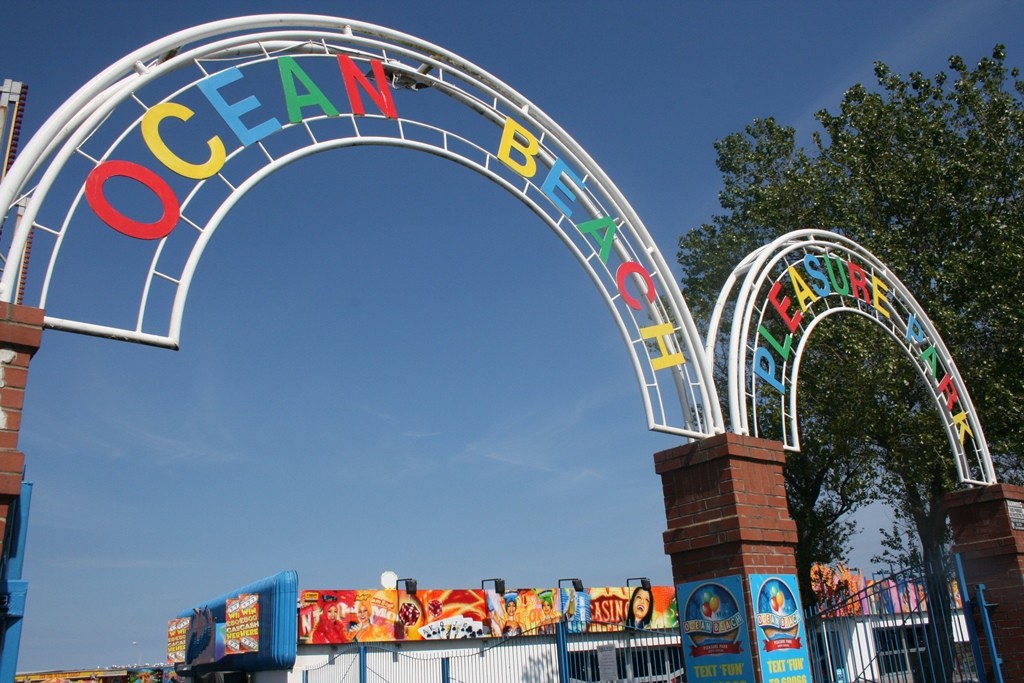
Photograph by Robyn Orr, 2015. Entrance to Ocean Beach Pleasure Park, opposite the South Marine Park.
The fair (know as Ocean Beach Pleasure Park) began to take a permanent format in 1899, when the travelling fairground rides that came to the town during the summer months were legally allowed to set rides at any time, rather than having to wait until the morning market stalls closed for the day. One of the first permanent rides was the Aerial Flight, built in the 1910’s-20’s (below photograph). It appears to be in the approximate site of the fairground today, if not slightly to the left on the Littlehaven beach. It cost 1d for a ride, and advertises that it is suitable and “approved” for all ages – although I think it looks slightly terrifying.
Another long standing ride is the Helter Skelter, which was joined by the Crazy Cottage and traditional stalls to create the fair in the early twentieth-century. Later, the mechanical rides were replaced by the electric ones we are familiar with today, such as the Waltzer, the Twister, and the Rollercoaster. Tourists today can visit the fairground and purchase tickets to use the rides. The fair is usually very busy during the Easter weekend, with both visitors and locals alike.
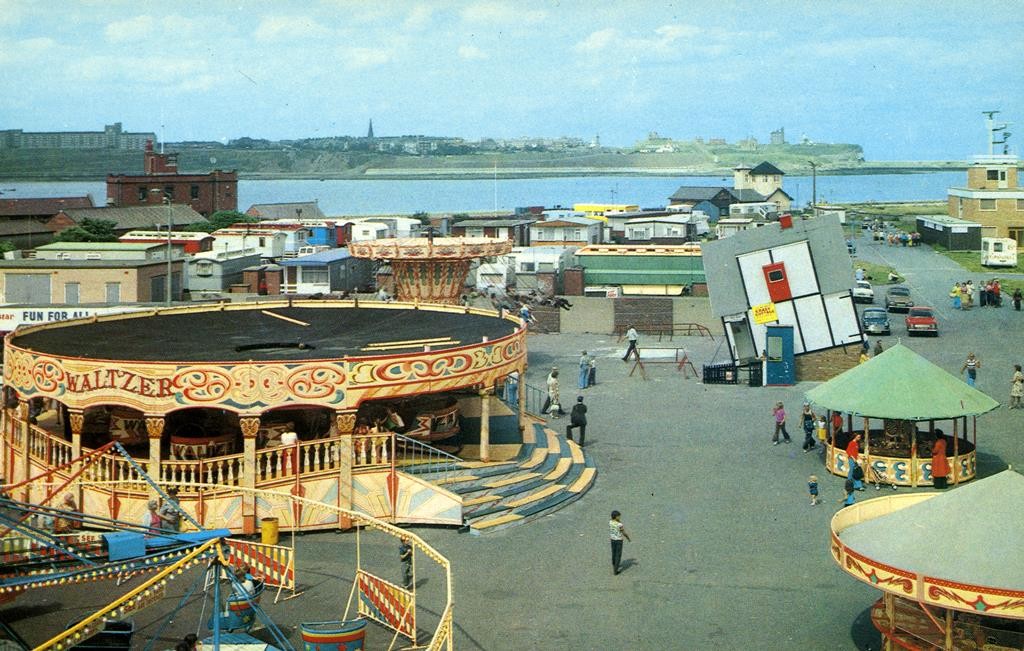
TWCMS : 2011.1905. Postcard from the collections at South Shields Museum and Art Gallery. Waltzer on the left; ‘Crazy Cottage’ in the back right (significantly smaller, too!)
I relived my childhood and had a turn on ‘Hook a Duck’, and bought a stick of rock.
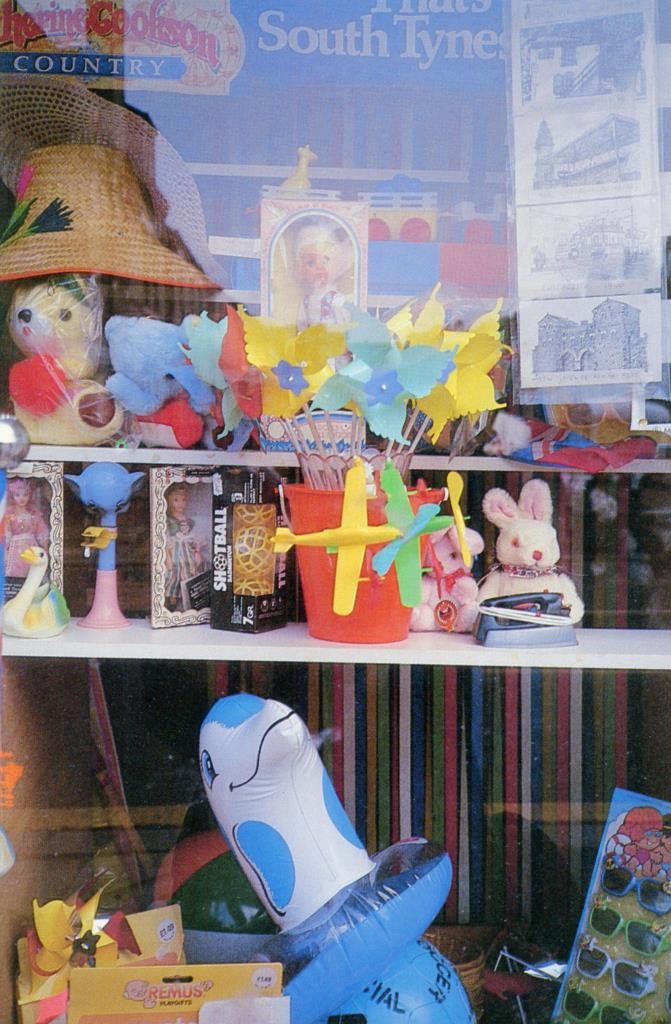
TWCMS : 2011.3138. Postcard from the collections at South Shields Museum and Art Gallery. A shop within the fairground selling seaside treats.
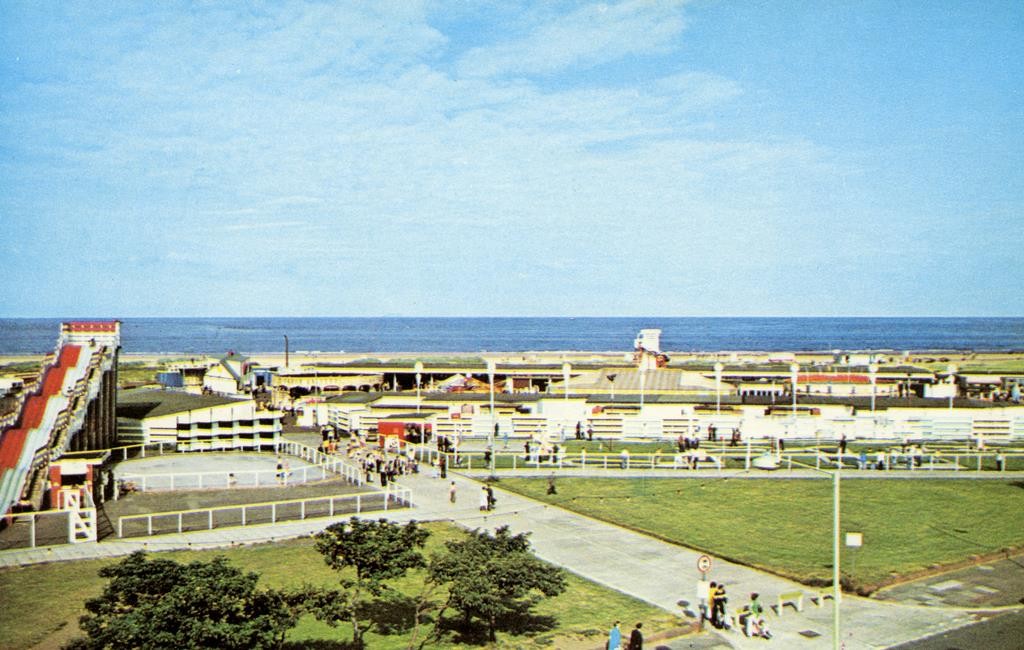
TWCMS : 2009.2299. Postcard from the collections at South Shields Museum and Art Gallery. View of the fairground from the 70’s/80’s.
Promenade
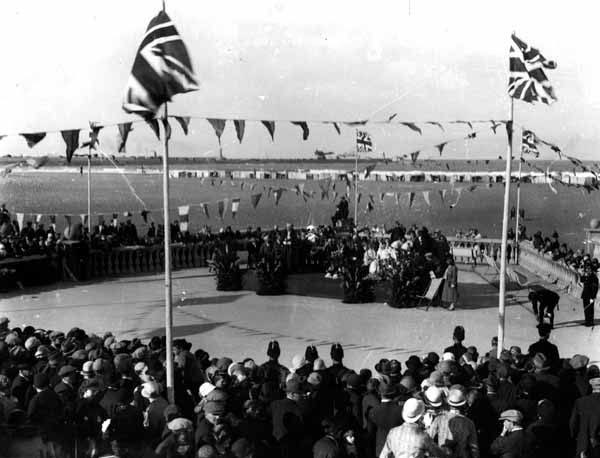
STH0006367. Copyright South Tyneside Images. Opening of the South foreshore after some refurbishment and the building of the promenade, 1927.
The promenade was officially opened on the 18th July 1927, as shown in the above photograph, after the south foreshore was refurbished for visitors. However, previous to this, stalls lined the beaches, as the below 1896 photograph shows; unofficially, the promenade began to take shape from the 1850’s. It stretches from Trow rocks (past the Sandancer pub), to the Groyne miniature pier on the mouth of the Tyne, meaning it is a straight, ideal walkway for the tourist.
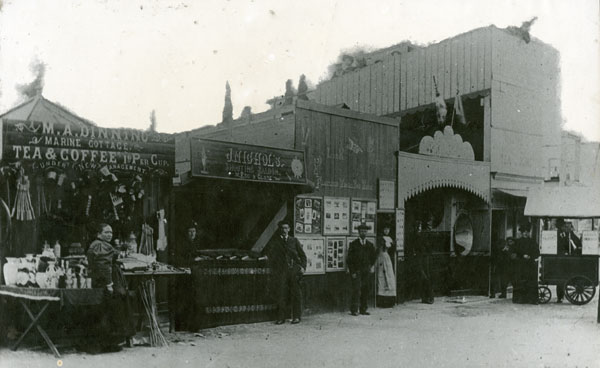
STH0000830. Copyright South Tyneside Images. 1899; stalls line the promenade before the official opening. The stall to the far left, M.A Dinning’s, sells refreshments for visitors.
One of the most famous cafes on the promenade, Frankie’s Ritz, opened after the Italian immigrants Amelia and Frederico Turrichi moved from selling toffees, sweets, and ice creams on makeshift stalls to solid premises in the mid 30’s. Holiday makers could stop here for hot water to make their own tea, allowing picnics to be taken on the sands, and later for fish and chips and fast foods. Although Frankie’s is now sadly closed, further along Minchella’s has remained a constant feature along the Sandhaven side of the promenade since the 1989, opening on the newly built elevated walkway. Made from tiles, this is what is considered as a ‘death trap’ in the rain; extremely high and slippery!
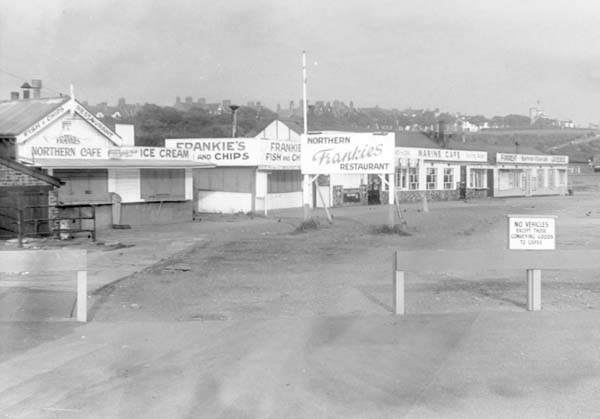
STH0005801. Copyright South Tyneside Images/Neal Frank. Cafe’s lining the promenade; Frankie’s and Marine Cafe.
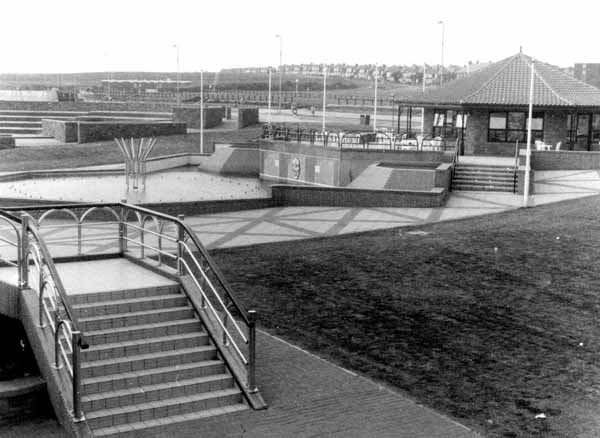
STH0006371. Copyright South Tyneside Images/Keith Bardwell. 1980’s view of Minchella’s and the walkway; amphitheatre in the background.
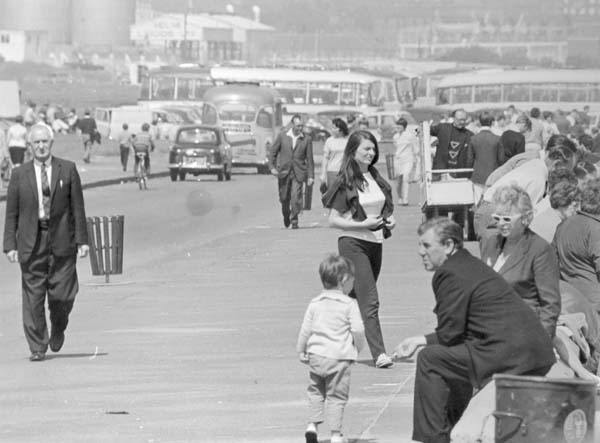
STH0005802. Copyright South Tyneside Images/Neal Frank. 1967 view of the promenade on a busy summers day.
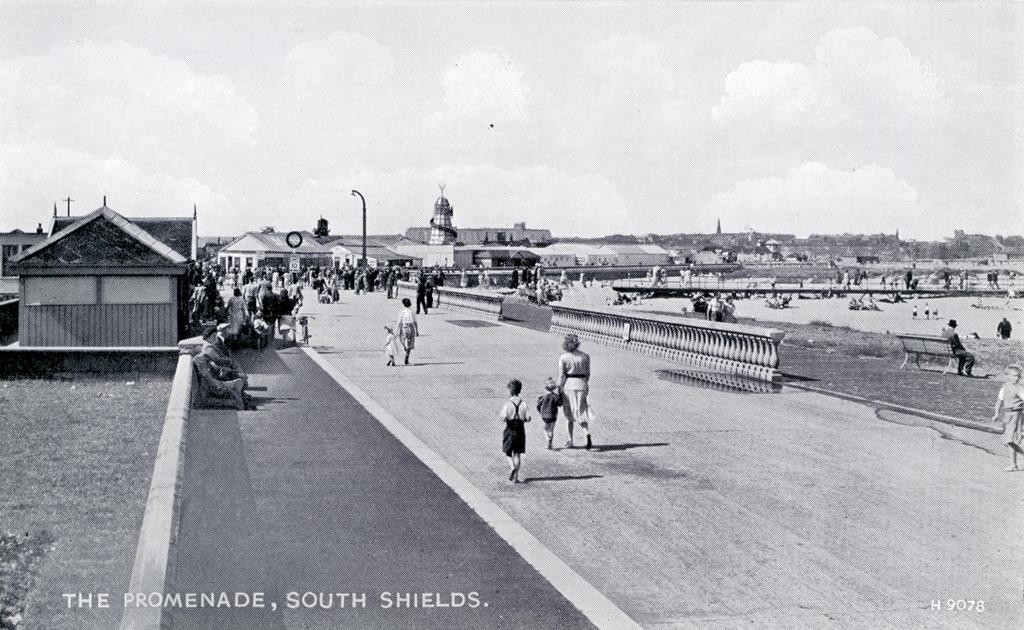
TWCMS : 1998.116.9. Postcard from the collections at South Shields Museum and Art Gallery. View of the promenade towards the Littlehaven sands; fair in the background.
Opposite the Littlehaven Sands, the promenade featured an outdoor swimming pool, which stood where the new Haven Point currently stands today. At 176×50 and 6ft6 at the deepest, the pool was ample to contain many tourists of all ages and swimming abilities. The seating around the pool could seat one thousand, meaning everything from Galas to casual swimming often took place weekly during the summer opening times of 7am to dusk. In the 1930s, the standard entrance fee was 3d, and extra for a towel and a costume. The popularity most likely derived from the wind shelter provided by the seating, lack of strong currents and dangerous tides, and the private changers on site.
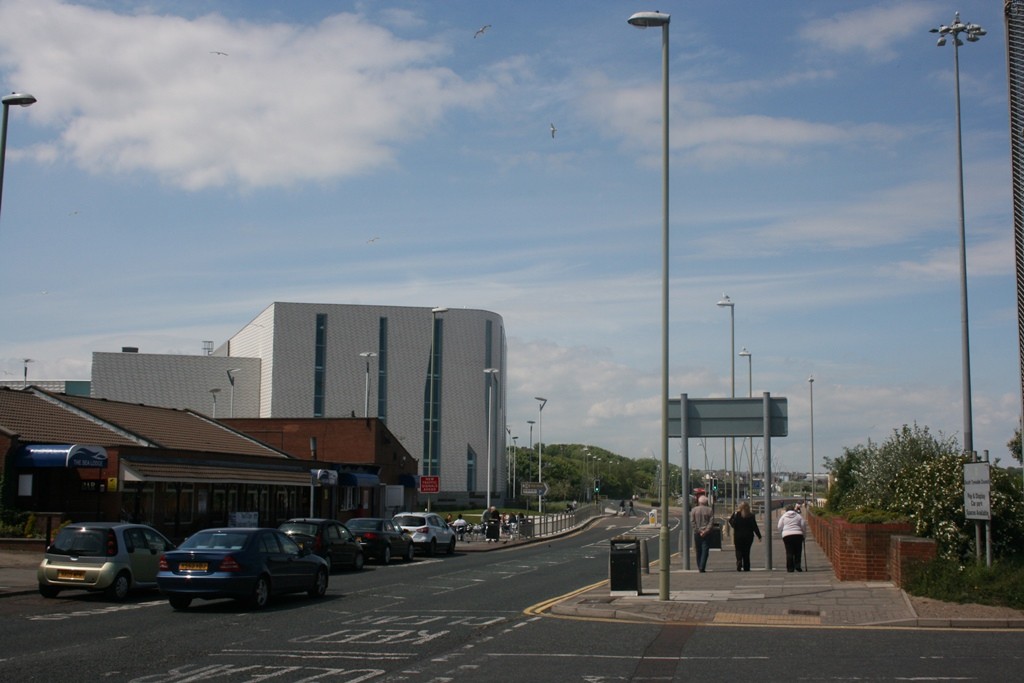
Photograph by Robyn Orr, 2015. View of the Haven Point leisure centre, where the pool was previously.
The Pier
Between both the Littlehaven beach and the Fairground is the South pier (named as such to compare with the North Shields Pier). Building work began from the 15th June 1854, and was not completed until 1895. In December 1897, the financial commissioners of the pier placed barricades at the entrance, intending on charging the public a fee to experience the walk. Although the council removed the barriers at first, eventually it was established that the pier financiers could charge for the walk, but had to shut the pier on an night time. In 1919, the pleasure boat companies put forward an agreement to build upon the left side of the Pier, allowing them to dock and profit from the potential trade in walkers. Companies could do so if they paid the mandatory 2s 6d for the summer. The Pier no longer charges visitors, however it does still lock-up on evenings for health and safety reasons. The end of the pier features a lighthouse, of which a stone (possibly ivory) dolly was pushed into the masonry on the outside of the building by one of the construction workers. It unfortunately no longer exists, having been touched and picked at for years.
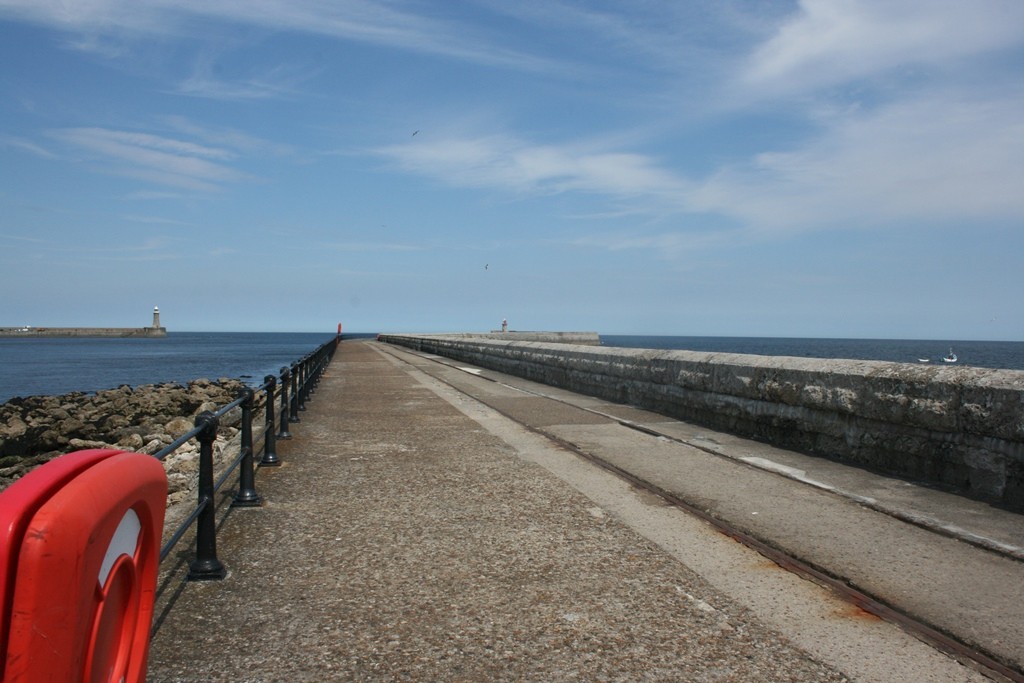
Photograph by Robyn Orr, 2015. View of pier; north pier in top left; rail tracks for transporting goods to and from end of pier and ships.
Thanks for reading! Please leave any comments below – I’d love to hear your own seaside South Shields stories. My next post will be about the town centre and transport.
